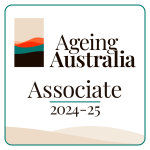New Aged Care Standards 2025: Your Essential Guide to Change

Revolutionizing Aged Care: Australia’s New Standards and Act Set to Transform the Industry
The Australian aged care industry stands on the brink of a monumental transformation. With the introduction of strengthened Quality Standards commencing on 1 July 2025, alongside a new Aged Care Act, the landscape of care delivery and provider responsibilities is set to undergo a radical shift. This comprehensive overhaul aims to address systemic issues in aged care quality and safety, moving from a provider-centred model to a person-centred, rights-based approach that prioritizes the needs and dignity of older Australians.
Background and Context
Historical Context: The Royal Commission’s Findings
The roots of this transformation can be traced back to the Royal Commission into Aged Care Quality and Safety, which concluded its investigation in 2021. The Commission’s findings painted a stark picture of an aged care system in crisis, highlighting significant shortcomings in care quality, safety standards, and respect for the rights of older Australians. The Commission’s final report called for sweeping reforms to address these systemic issues and rebuild trust in the aged care system.
Current Relevance and Importance
The implementation of the new Aged Care Act and strengthened Quality Standards represents a direct response to the Royal Commission’s recommendations. This shift marks a pivotal moment in Australian aged care, moving away from a system that often prioritized operational efficiency over individual needs to one that places the rights, preferences, and wellbeing of older Australians at its core.
The relevance of these changes cannot be overstated. With an aging population and increasing demand for aged care services, ensuring a high-quality, person-centered care system is not just a matter of policy but a societal imperative. These reforms aim to address long-standing issues such as inadequate staffing levels, insufficient transparency, and a lack of accountability in care delivery.
The New Aged Care Act: A Paradigm Shift
Replacement of Existing Acts
The new Aged Care Act will replace three existing pieces of legislation:
- The Aged Care Act 1997
- The Aged Care (Transitional Provisions) Act 1997
- The Aged Care Quality and Safety Commission Act 2018
This consolidation aims to streamline regulation and create a more cohesive legislative framework for the aged care sector.
Introduction of Statement of Rights
At the heart of the new Act is the Statement of Rights, a cornerstone document that outlines the fundamental rights of older Australians in the aged care system. This statement emphasizes:
- The right to independence and autonomy
- Respect for privacy and dignity
- The right to make decisions about one’s own care
- Freedom from discrimination and abuse
- The right to raise concerns without fear of reprisal
This rights-based approach represents a significant shift in how aged care is conceptualized and delivered, placing the older person’s agency and dignity at the forefront of care practices.
Expanded Powers for Regulators
The new Act significantly enhances the powers of regulatory bodies, particularly the Aged Care Quality and Safety Commission (ACQSC). These expanded powers include:
- More robust inspection and audit capabilities
- Increased authority to impose sanctions on non-compliant providers
- Enhanced ability to protect whistleblowers and investigate complaints
These measures aim to create a more accountable and transparent aged care system, where providers are held to higher standards of care and governance.
Strengthened Quality Standards: A New Framework for Excellence
Reduction from Eight to Seven Standards
The new Quality Standards have been streamlined from eight to seven, focusing on key areas of care delivery and organizational governance. This reduction is not about lessening requirements but rather about creating a more focused and impactful set of standards.
Detailed Explanation of Each Standard
- The Person: This standard focuses on the individual needs, preferences, and rights of each older person. It emphasizes personalized care planning and supported decision-making.
- The Organisation: This standard addresses the governance, leadership, and organizational culture of aged care providers. It emphasizes transparency, accountability, and continuous improvement.
- The Care and Services: This standard outlines the requirements for delivering safe, effective, and high-quality care services. It covers areas such as personal care, clinical care, and lifestyle support.
- The Environment: This standard focuses on creating safe, comfortable, and homelike environments for older people, whether in residential facilities or home care settings.
- Clinical Care: This standard sets out the requirements for delivering high-quality clinical care, including medication management, pain management, and specialized care for conditions like dementia.
- Food and Nutrition: This standard emphasizes the importance of nutritious, appealing meals that meet individual dietary needs and preferences.
- The Residential Community: This standard addresses the social and emotional aspects of care, focusing on creating a sense of community and belonging for residents in aged care facilities.
Emphasis on Person-Centred Care
Throughout these standards, there is a strong emphasis on person-centred care. This approach recognizes that each older person has unique needs, preferences, and life experiences that should shape their care journey. It moves away from a one-size-fits-all approach to care delivery, instead promoting individualized care plans and supported decision-making.
New Regulatory Model: Enhancing Accountability and Collaboration
Registration and Re-registration Process
Under the new regulatory model, aged care providers will be required to register with the ACQSC and undergo a re-registration process every three years. This process aims to ensure ongoing compliance with quality standards and regulatory requirements.
The registration categories are as follows:
- Home support providers
- Home care providers
- Flexible care providers
- Residential care providers
- Providers of multiple service types
- Large providers
Audit Requirements for Specific Categories
Providers in categories 4, 5, and 6 will be subject to more rigorous audit requirements. These audits will assess compliance with the strengthened Quality Standards and will play a crucial role in the re-registration process.
Improved Transparency and Collaboration
The new regulatory model emphasizes stronger working relationships between providers, the Department of Health and Aged Care, and the ACQSC. This collaborative approach aims to:
- Increase transparency in the sector
- Facilitate the sharing of best practices
- Enable more proactive identification and resolution of issues
By fostering a more open and collaborative environment, the new model seeks to drive continuous improvement across the aged care sector.
Workforce and Financial Changes: Investing in Quality Care
Phased Wage Increases for Aged Care Workers
Recognizing the critical role of the aged care workforce in delivering high-quality care, the reforms include phased wage increases for aged care workers. These increases aim to:
- Attract and retain skilled workers in the sector
- Recognize the value and complexity of aged care work
- Improve job satisfaction and career progression opportunities
The wage increases are being implemented in stages, with some already commenced from 1 January 2025 and others set to begin as late as October 2025.
Fee Adjustments and Room Price Changes
The financial aspects of the reforms also include changes to fee structures and room pricing:
- An increase in the maximum room price for residential aged care providers
- Introduction of a Higher Everyday Living Fee
- Implementation of means-tested co-contributions for non-clinical care
These changes aim to create a more sustainable funding model for the sector while ensuring that care remains accessible and affordable for older Australians.
Impact Analysis: Transforming Care Delivery and Workforce Satisfaction
Improved Care Quality for Older Australians
The combined effect of these reforms is expected to significantly enhance the quality of care for older Australians. Key improvements include:
- More personalized and responsive care plans
- Enhanced focus on maintaining independence and quality of life
- Improved clinical care and safety standards
- Greater respect for individual rights and preferences
These improvements are anticipated to lead to better health outcomes, increased wellbeing, and higher satisfaction among older Australians receiving care.
Enhanced Job Satisfaction and Retention in the Workforce
The reforms also promise significant benefits for the aged care workforce:
- Higher wages and improved working conditions
- Greater recognition of skills and expertise
- Enhanced career progression opportunities
- Improved job satisfaction through the delivery of higher quality care
These factors are expected to lead to better retention of skilled workers and attract new talent to the sector, addressing long-standing workforce challenges.
Comparison with Current System: A New Era in Aged Care
To illustrate the magnitude of these changes, let’s compare key aspects of the current and new systems:
| Aspect | Current System | New System |
|---|---|---|
| Focus | Provider-centered | Person-centered |
| Quality Standards | 8 standards | 7 strengthened standards |
| Regulatory Approach | One-size-fits-all | Tailored to provider categories |
| Workforce Recognition | Variable | Enhanced through wage increases and career pathways |
| Rights Framework | Limited | Comprehensive Statement of Rights |
| Funding Model | Fixed fees | Means-tested co-contributions with hardship provisions |
| Transparency | Limited | Enhanced through new regulatory model |
| Clinical Care Emphasis | Variable | Dedicated standard for clinical care |
This comparison highlights the comprehensive nature of the reforms and their potential to transform every aspect of aged care delivery in Australia.
Current Debates: Navigating the Challenges of Change
Funding Model Changes and Financial Impact
One of the most debated aspects of the reforms is the introduction of means-tested co-contributions for non-clinical care. Proponents argue that this model ensures the sustainability of the aged care system and allows for better allocation of resources. Critics, however, express concerns about the potential financial burden on older Australians and their families.
The government has responded to these concerns by implementing ‘no worse off’ arrangements and hardship measures. These provisions aim to protect those already in the system and ensure that care remains accessible to all, regardless of financial means.
‘No Worse Off’ Arrangements and Hardship Measures
The ‘no worse off’ arrangements are designed to ensure that older Australians currently receiving aged care services will not face increased costs under the new system. This grandfathering approach aims to provide stability and peace of mind for existing care recipients.
Additionally, new hardship measures will be introduced to support those who may struggle with the means-tested co-contributions. These measures will be assessed on a case-by-case basis, ensuring that financial circumstances do not become a barrier to accessing high-quality care.
How To Prepare for the New Standards: A Guide for Providers
As the implementation date for the new standards approaches, aged care providers must take proactive steps to ensure compliance and embrace the spirit of the reforms. Here’s a step-by-step guide to help providers prepare:
1. Conduct a Comprehensive Self-Assessment
- Review current practices against the new Quality Standards
- Identify gaps in compliance and areas for improvement
- Engage staff at all levels in the assessment process
2. Develop a Transition Plan
- Create a detailed roadmap for implementing necessary changes
- Set clear timelines and milestones
- Assign responsibilities to key team members
3. Implement New Policies and Procedures
- Revise existing policies to align with the new standards
- Develop new procedures where gaps are identified
- Ensure all documentation reflects the person-centered approach
4. Train Staff on Person-Centred Care Practices
- Conduct comprehensive training sessions on the new standards
- Focus on practical application of person-centered care principles
- Provide ongoing support and mentoring for staff
5. Establish Robust Feedback Mechanisms
- Implement systems for regular feedback from care recipients and their families
- Create channels for staff to report concerns and suggest improvements
- Use feedback to drive continuous improvement in care delivery
By following these steps, providers can position themselves for success under the new regulatory framework and deliver higher quality care to older Australians.
FAQ: Navigating the New Aged Care Landscape
Q: What are the implications of the new registration categories?
A: The new registration categories tailor regulatory requirements to the size and complexity of providers. Larger providers and those offering multiple service types will face more rigorous audit requirements, while smaller providers may have streamlined processes. This approach aims to ensure that regulatory oversight is proportionate and effective across the sector.
Q: How will the Statement of Rights affect day-to-day operations?
A: The Statement of Rights will require providers to embed rights-based practices in all aspects of care delivery. This includes involving older people in decision-making, respecting their privacy and dignity, and ensuring they have the freedom to raise concerns without fear of reprisal. Providers will need to train staff on these principles and may need to adjust care plans and operational procedures to align with the Statement.
Q: What are the consequences of non-compliance with the new standards?
A: Non-compliance can result in a range of consequences, from improvement notices to sanctions that limit a provider’s operations. In severe cases, providers may lose their registration and be unable to continue operating. The expanded powers of the ACQSC mean that enforcement actions are likely to be more robust under the new system.
Q: How will the means-tested co-contributions be calculated?
A: While the exact formula is still being finalized, the co-contributions will likely be based on an individual’s income and assets, similar to the current means testing for residential care. The government has committed to ensuring that the system is fair and that no one is denied care due to inability to pay.
Q: What support is available for providers during the transition period?
A: The Department of Health and Aged Care and the ACQSC are providing a range of support mechanisms, including:
- Detailed guidance materials on the new standards
- Webinars and training sessions
- A dedicated helpline for provider queries
- Transition advisors to assist with complex cases
Providers are encouraged to engage with these resources early in their transition planning process.
Challenges and Solutions: Navigating the Road Ahead
Challenge: Adapting to New Regulatory Requirements
Solution: Utilize guidance resources and webinars provided by ACQSC. Providers should create a dedicated transition team to oversee the implementation of new standards and regularly review progress. Engaging with industry associations can also provide valuable insights and support.
Challenge: Financial Implications of New Fee Structures
Solution: Develop comprehensive financial models that account for the new fee structures and potential changes in revenue. Seek professional financial advice to understand the implications fully and explore strategies to maintain financial sustainability while meeting the new standards.
Challenge: Workforce Development and Retention
Solution: Implement robust staff training programs that focus not only on the new standards but also on career progression pathways. Consider partnering with educational institutions to offer ongoing professional development opportunities. Emphasize the positive aspects of the reforms, such as improved care quality and job satisfaction, to boost morale and retention.
Ethical Considerations and Best Practices
Upholding Dignity and Rights of Older People
The new standards place a strong emphasis on respecting the dignity and rights of older Australians. Best practices include:
- Involving older people in all decisions about their care
- Respecting cultural and religious preferences
- Maintaining privacy and confidentiality
- Supporting independence and autonomy wherever possible
Ensuring Transparency in Care Delivery and Decision-Making
Transparency is crucial for building trust and accountability. Providers should:
- Clearly communicate care plans and any changes to older people and their families
- Provide regular updates on the implementation of new standards
- Be open about any challenges or issues that arise
- Encourage feedback and act on suggestions for improvement
Promoting Cultural Safety and Inclusivity
As Australia’s population becomes more diverse, cultural safety and inclusivity are increasingly important. Best practices include:
- Providing culturally appropriate care and services
- Offering language support where needed
- Celebrating diversity within aged care communities
- Training staff in cultural competence and sensitivity
Tools, Equipment, and Resources
To support providers in implementing the new standards, several key resources are available:
- Guidance Resources from ACQSC and Department of Health and Aged Care: These include detailed explanations of the new standards, implementation guides, and best practice examples.
- Aged Care Fundamentals eLibrary: Developed by etrainu in partnership with Carers QLD, this comprehensive online resource offers modules on the new standards, person-centered care, and regulatory compliance.
- Webinars and Newsletters: Regular webinars and newsletters provide updates on the implementation process, clarify complex issues, and share insights from early adopters.
- Self-Assessment Tools: The ACQSC provides self-assessment tools to help providers evaluate their readiness for the new standards and identify areas for improvement.
- Training Modules: Specialized training modules are available to help staff at all levels understand and implement the new standards in their daily work.
Providers are encouraged to make full use of these resources to ensure a smooth transition to the new regulatory environment.
Conclusion: A New Chapter in Australian Aged Care
The introduction of the strengthened Aged Care Quality Standards and the new Aged Care Act marks the beginning of a new era in Australian aged care. These reforms represent a fundamental shift towards a more person-centered, rights-based approach to care delivery. Key changes include:
- A reduction from eight to seven strengthened Quality Standards
- Introduction of a comprehensive Statement of Rights
- A new regulatory model with enhanced oversight and collaboration
- Workforce reforms including phased wage increases
- Changes to funding models and fee structures
The potential for these reforms to improve the quality of aged care and outcomes for older Australians is significant. By placing the individual at the center of care decisions, enhancing workforce capabilities, and increasing accountability, the new system aims to address long-standing issues in the sector.
For providers, the road ahead will require careful planning, investment in staff development, and a commitment to continuous improvement. Those who embrace the spirit of these reforms and proactively adapt their practices stand to thrive in this new environment.
As we approach the implementation date of 1 July 2025, all stakeholders in the aged care sector must work collaboratively to ensure a smooth transition. By doing so, we can create an aged care system that truly honors the dignity, rights, and individuality of older Australians, setting a new standard for quality and compassionate care.
Additional Resources
For those seeking further information or support, the following resources are invaluable:
- Department of Health and Aged Care Website
- Aged Care Quality and Safety Commission Resources Page
- Industry Association Guidance Documents
These resources offer the most up-to-date information, guidance, and support for navigating the new aged care landscape. By staying informed and engaged with these materials, providers, workers, and older Australians can work together to realize the full potential of these transformative reforms.









